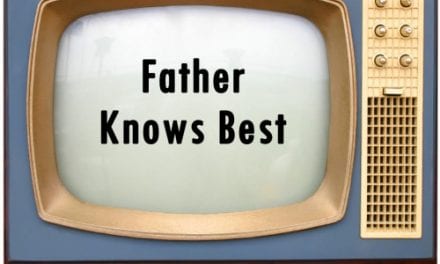More than six months into the pandemic we know one thing for certain. When you speak of activity offerings –events, parties, outings, community involvement, volunteers, and the standard monthly calendar — it’s not the way it used to be.
There are new factors to the space of engagement. And, truth be told, these factors are requiring every community to have a more rounded approach and meet the needs of a variety of personalities and scenarios. For those wading through what is perceived as extreme messiness, lack of control, and frustration, you need to change your lens.
What you are experiencing is growing pains. It is never easy to grow, even if you intentionally make an effort to improve. Growth is synonymous with stepping out of your comfort zone, accepting a better way to do something, and finding a way to thrive in the uncertainty until you get through the learning curve. I believe there are 5 components to the “new look” of activities that are here to stay.
1. In-Person Activity Staff Led Offerings
What used to be 80% of the calendar is now about 20% and will most likely remain that way, hopefully for the long run. Plan, schedule, and wait for people to show up has exposed some faults in our approach. Do not try to go back to what was, rather learn a new approach. Just because we could host a dozen activities a day and rely on outside volunteers, families, and paid vendors did not necessarily mean we reached more people. It simply gave your active 30% more options in their day.
Hiring more staff is not the solution. Especially when occupancy is down and costs are up. Rather how do you re-think your time and empower residents to have more control and dictate their day with other residents, virtual offerings, or independent engagement?
2. Virtual Programming
MAKE THIS A PRIORITY! You are absolutely right that you won’t get 100% of residents. Not even 50% will do virtual programs. But, what if 10-15% are willing to learn and interested in the options? Give them that opportunity. That is another 15% that can start to tailor their own approach to engagement, learn new things, study a craft, move, socialize, and create.
These programs are so cost-effective. If you were spending $100.00 on one entertainer or exercise instructor, you can take that same $100.00 and offer live, virtual, and on-demand programming for all these residents for an entire month. SPIRO100 is a great option for exercise and mindfulness, as is Eversound’s premium programming, and offerings such as Artfull Aging, and Feet to the Fire Writers Workshop, etc. Use these resources that are doing all the work for you. You just have to embrace tech and realize it is not displacing your talents, rather helping you reach more people.
Your time = money and is oh so valuable. People want interaction and real conversation, not decoration and distraction. Do not spend your time creating elaborate days and searching online when you have extremely affordable resources, all for around $100.00 a month and unlimited use!
3. Small Groups
This grassroots, self-initiated engagement is the heartbeat of the community. It does not have to be scheduled or programmed. It happens all day, every day. The conversation, even 6 feet away, when people are moving about the community is a great example, as are the phone calls and text messages of residents checking on one another. The question to staff that asks how their friend on the other hall or floor is doing. Do not discount this interaction. It is powerful and it does not need to be facilitated; instead make space and time in the calendar for this to occur. Do not over-program. We will talk calendars in a minute. 🙂
4. Independent Activities
This is not new. However, prior to COVID we just categorized this group as “non-participants” or “introverts” who did not like the offering, but also wouldn’t suggest new activities. What we have learned by going door-to-door is that people have been engaged with things in their own life and own space. The difference now is that we know a bit more about what they are doing, their interests, and the why behind the “non-participant”. In the same breath, some of these people may have flip-flopped and found new ways to engage themselves differently than before. This is an ongoing discovery we have to be committed to exploring. It is rarely easy, but there is always a why! Why people do, act, engage, or hold back always has a deeper reason.
5. And . . . the Calendar
How do you put all of this above on the calendar? How will it ever fit in the daily box for the month or the list on the daily schedule? It. Will. Not! I will now ask you; do you put breakfast, lunch, and dinner on your calendar each day? No, you just know it is a daily occurrence. I am not saying you do not need to provide the menu, but if the time is the same every day, we are insulting residents by telling them what time they are eating today. If the snack cart comes up and down the hall every day at the same time . . . that is not an activity. If there are morning announcements or checking of mail each day, not an activity. If you passed a crossword, word search, or art page, you do not need to dictate when someone should complete that page, not an activity.
The calendar is something that someone wants to pick up and can see it looks different from the month before. Yes, there are legacy items on specific days at the same time. But your calendar each month and each week should have variety. Is there a day that the community is lighter staffed, more laid back? Your calendar should follow that pattern. What is the point of a weekend if all 7 days look exactly the same? Do you spend every day from 1-2:30 pm knocking on doors to get people out and are met with, “I’m resting after lunch”? If so, stop scheduling an activity directly after lunch.
Be okay altering what has always been for something new and improved. No matter what job we do, what profession we are in, there is always an opportunity to do better. We never arrive at perfection, but we are always pursuing improvement.
Be Open To Trying Something New
Take a step back, look at the offerings on your calendar and weekly approach. If you do not have all of these elements to reach a broader audience than before, ask for help! Be open to trying something new. I promise, now is the time to try something new things. Just because something worked extremely well before COVID does not mean you have to repeat it. If Assisted Living or Active Aging Week was always done like “this or that”, I assure you this year it will look different and may even have reduced resources. The good thing about this is that we are being forced to tap into the strengths of our staff and residents. While this looks inconvenient and takes more time, it is, hands down, the best way to build community. Community is the best example of a lot of parts and pieces coming together to make a greater collective.








